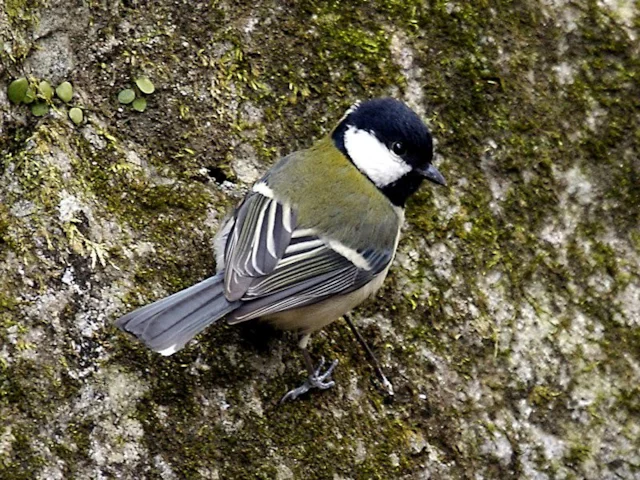True variety of bird alarm calls discovered
99eacb59-f323-467c-99e1-879fbdd76fb2

Japanese Great Tits use specific alarm calls for different predators, research has shown, increasing our knowledge of bird communication.
A study analysed the species' calls and found they made jar sounds for snakes and different chicka sounds for crows and martens. This is the probably first evidence that birds can communicate vocally about the type of predator threatening them.
Dr Toshitaka Suzuki, from the Graduate University for Advanced Studies, Kanagawa, noted that Japanese Great Tits appeared to know the difference between separate kinds of predators. But could they communicate this information to other individuals? As an experiment, he placed models of three different major predators of tit nestlings close to their nest boxes, and recorded the birds' responses to the snake, crow and marten models. He also exposed the nest to a dove model as a non-predatory control.
"Parents usually make alarm calls when they approach and mob the nest predators," said Dr Suzuki on the BBC News website. "They produced specific jar alarm calls for the snakes and the same chicka alarm call in response to both the crows and martens," he said.
The birds appear to alter the calling rate and number of notes they used to announce the presence of crows when presented with martens. The birds seem to have evolved an ability to combine different notes to produce calls with different meanings – that is, a 'combinatorial communication system'.
A snake's ability to slide into nest holes means it poses a much greater threat to Japanese Great Tit chicks than other birds or mammals; Dr Suzuki says it is therefore logical that the birds would have a snake-specific alarm call. He explained: "Human language is based on a combinatorial rule, which allows us to generate an infinite number of expressions or words from a finite set of elements (that is, alphabets). Similarly, the birds can make a word 'crow' or 'marten' by combining different types of notes into an alarm call."
Many animals use variation in alarm calls to warn other members of their species about different predators. This is one of the few studies to examine how individual animals use specific alarm calls to denote specific risks.
Further playback studies are required to determine whether and how individuals of a species can extract predator information from graded and combinatorial variation in alarm calls, of which 175 combination variations were noted in the study.
A study analysed the species' calls and found they made jar sounds for snakes and different chicka sounds for crows and martens. This is the probably first evidence that birds can communicate vocally about the type of predator threatening them.
Dr Toshitaka Suzuki, from the Graduate University for Advanced Studies, Kanagawa, noted that Japanese Great Tits appeared to know the difference between separate kinds of predators. But could they communicate this information to other individuals? As an experiment, he placed models of three different major predators of tit nestlings close to their nest boxes, and recorded the birds' responses to the snake, crow and marten models. He also exposed the nest to a dove model as a non-predatory control.
"Parents usually make alarm calls when they approach and mob the nest predators," said Dr Suzuki on the BBC News website. "They produced specific jar alarm calls for the snakes and the same chicka alarm call in response to both the crows and martens," he said.
The birds appear to alter the calling rate and number of notes they used to announce the presence of crows when presented with martens. The birds seem to have evolved an ability to combine different notes to produce calls with different meanings – that is, a 'combinatorial communication system'.
A snake's ability to slide into nest holes means it poses a much greater threat to Japanese Great Tit chicks than other birds or mammals; Dr Suzuki says it is therefore logical that the birds would have a snake-specific alarm call. He explained: "Human language is based on a combinatorial rule, which allows us to generate an infinite number of expressions or words from a finite set of elements (that is, alphabets). Similarly, the birds can make a word 'crow' or 'marten' by combining different types of notes into an alarm call."
Many animals use variation in alarm calls to warn other members of their species about different predators. This is one of the few studies to examine how individual animals use specific alarm calls to denote specific risks.
Further playback studies are required to determine whether and how individuals of a species can extract predator information from graded and combinatorial variation in alarm calls, of which 175 combination variations were noted in the study.

